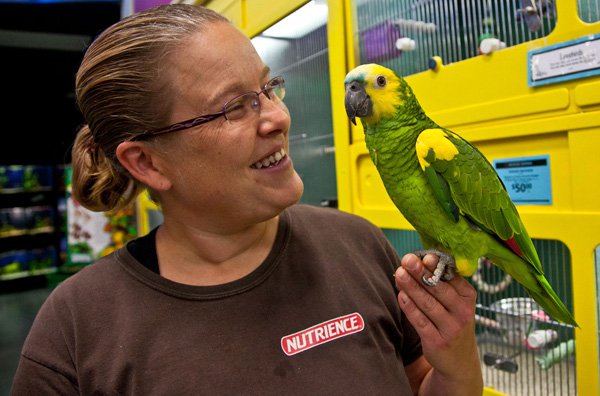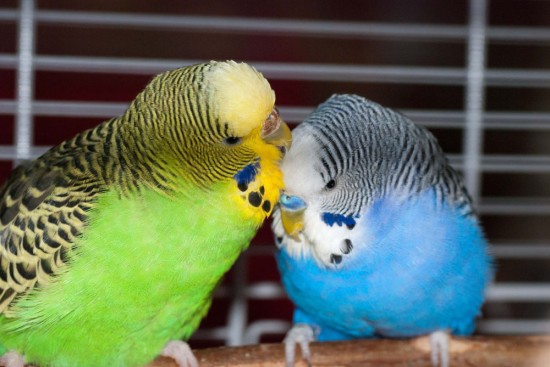
Keeping tropical fish is a fascinating hobby that has been
enjoyed for centuries in different parts of the world. The
Romans kept live anemones in saltwater jars, but never succeeded
in keeping these beautiful creatures alive for any longer period
of time in captivity. They were however much more successful
with keeping eels in aquariums, and some sources claim that
certain types of eels reached an age of up to 60 years when kept
by the Romans. In South East Asia, the first fish keepers had
their fish in ponds, not in aquariums. The first domesticated
species were probably carps and all of today’s fancy goldfish
types actually hail from a wild carp that can still be found in
Asian rivers and streams.
If you want your fish to thrive like the Asian carps instead of
quickly vanish like the Roman anemones, it is important that you
take the time to learn the basics about fish keeping and
aquarium maintenance before you set up your first aquarium. By
obtaining the basic information before you go about, you will
save yourself a lot of time, money and effort in the long run
since you will be able to avoid the common beginner mistakes.
One common beginner mistake is for instance to purchase a very
small aquarium, thinking that a large one is much more difficult
to manage. The truth is however that the mega-sized show
aquariums that you can see in your fish store are easier to
maintain than your tiny 5 gallon tank. In a small aquarium,
there will be a very little amount of water. If a fish dies in a
large aquarium, the pollution will be diluted by gallons and
gallons of water. If a fish dies in your 5 gallon aquarium, the
carcass may very well pollute your entire tank before you even
notice the demise and remove the body from the water. I
therefore recommend the beginner aquarist to choose at least a
10 gallon aquarium, and a 30 gallon aquarium is ideal. Avoid
extraordinary deep aquariums since they are more difficult to
clean. A very deep aquarium can also become a problem if you
want to introduce plants to your aquarium, since you might have
to install extra strong lights that are capable of penetrating
the deep water all the way down to the plants at the bottom of
the aquarium.
Filling up your aquarium with water and then promptly add all
your fish at once is extremely unadvisable since the aquarium is
ready to accommodate that many fishes. An aquarium is actually a
miniature ecosystem and fish is not the only thing inhabiting
it. Your fish will produce plenty of waste products (chiefly
fish poop) that will eventually begin to build up in the
aquarium. It is naturally not very healthy for fish to swim
around in there own feces, but fortunately enough there exists a
certain type of bacteria that can convert waste products from
fish into compounds that are less unhealthy. Fish poop contains
a high level of ammonia, and ammonia is also excreted via the
gills of your fish. Ammonia is harmful to fish and also can turn
extremely poisonous if your aquarium experience a sudden change
in water chemistry that pushes the pH level above 7.5. If you
allow populations of suitable bacteria to establish in your
aquarium before you introduce all your fish, the bacteria will
convert the ammonia into nitrite. Nitrate is also very unhealthy
and high levels of nitrite will kill your fish, but fortunately
enough there is another type of bacteria that will love to live
in your aquarium and that will change the nitrite into a less
harmful compound – nitrate. Nitrate is less dangerous than
ammonia and nitrite, but high levels of nitrate will be
unhealthy for your fish. There are unfortunately no beneficial
bacteria to aid you here, and you must instead remove the
nitrate by performing regular water changes. Changing 25 percent
of the water once a week is a good rule of thumb, but some
aquariums require more frequent water changes. When you are
trying to establish your new aquarium or if you are experiencing
problems with the water quality, smaller and more frequent water
changes are advisable.
 Benefits of Mobile Dog Grooming
Benefits of Mobile Dog Grooming
Mobile dog gro
Benefits of Mobile Dog Grooming
Benefits of Mobile Dog Grooming
Mobile dog gro
 When Dogs Dont Get Along Together
When Dogs Dont Ge
When Dogs Dont Get Along Together
When Dogs Dont Ge
 Seven Warning Signs Of Illness To Watch Out For In Young Puppies
Seven Warning Sig
Seven Warning Signs Of Illness To Watch Out For In Young Puppies
Seven Warning Sig
 Magnificent Horse fences that elevates ones mount from wall harm
Magnificent Horse fences that elevates ones mount from wal
Magnificent Horse fences that elevates ones mount from wall harm
Magnificent Horse fences that elevates ones mount from wal
 Showing Budgies For Beginners
Showing Budgies F
Showing Budgies For Beginners
Showing Budgies F
Copyright © 2005-2016 Pet Information All Rights Reserved
Contact us: www162date@outlook.com